Search Results
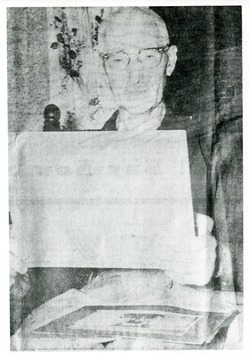
- IDNO:
- 009709
- Title:
- Railroad Man, Volcano, W. Va.
- Description:
- 'Hard to see on original print, but it looks like he's holding a newspaper. The gentleman worked on the Laurel Fork and Sand Hill Railroad. This picture comes from a Parkersburg Sentinel article chronicling his experience. Parkersburg News July 10, 1960, page 6.'--Mike Naylor, 03/2006.

- IDNO:
- 009710
- Title:
- Wood Derrick and Pump Station, Volcano, W. Va.
- Description:
- 'The horizontal boards on the pumping station are called walking beams. Walking beams converted the horizontal energy to vertical(up and down motion)energy to pull the oil to the surface. Volcano had two newspaper: a) Volcano Lubrication and b) West Virginia Walking Beam.'--Mike Naylor, 03/2006

- IDNO:
- 009711
- Title:
- Gas Engine, Volcano, W. Va.
- Description:
- "This huge gas engine is the source of power for the pumping of at least 25 oil wells in the Volcano area. Oil, once plentiful in the vicinity, has been used up to such an extent that production costs must be kept to a minimum by the use of cheap power. The engine power is transferred to the pumps by means of an endless cable.'--Back of photograph. 'William C. Stiles, Jr. introduced the endless cable pumping system in 1874. He did not invent the endless cable system but was the first to use it in the production of oil. The John Roebling Comapny (NY) manufactured the cable used. This same cable used when Roebling built the Brooklyn Bridge. Roebling's son, Washington Roebling, played a very keen role in the Union victory of Gettysburg. Roebling never bothered to protect their cable-consided it to be a bother. The large wheel in this photo is a band wheel. It transfers the power from the engine to the endless cable system. The belt shown is probably leather. The power is geared up by passing over three belted wheels. The last wheel have a diameter of 18 feet. The 18 foot wheel travel very slowly, but very powerfully. Form it the power transfered to the cable system.'--Mike Naylor, 03/2006.
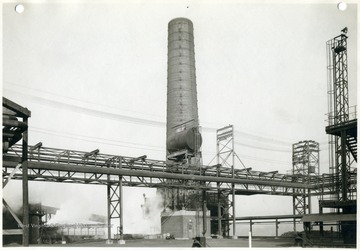
- IDNO:
- 009712
- Title:
- Quenching Station, Morgantown Ordnance Works, Morgantown, W. Va.
- Date:
- 1944/01/13
- Description:
- U.S. Engineer Office, Corps of Engineers, U.S. Army, Pittsburgh, PA. Morgantown Ordnance Works - Morgantown, W. Va. Quenching Station - Looking East, 13 January 1944, No. 21629.'
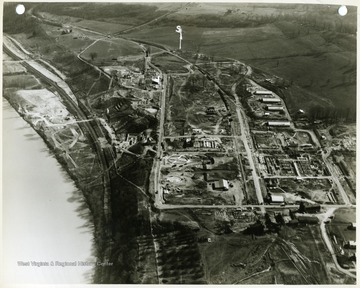
- IDNO:
- 009713
- Title:
- Aerial View of Morgantown Ordnance Works, Morgantown, W. Va.
- Date:
- 1941/04/02
- Description:
- '3:30 P.M. on April 2, 1941. 700 feet altitude. Camera points south. Plane 1/4 mile north of plant. Progress Photographs No. 119.'
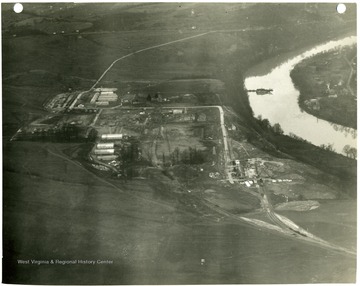
- IDNO:
- 009714
- Title:
- Morgantown Ordnance Works, Morgantown, W. Va.
- Description:
- Aerial view of the Morgantown Ordnance Works.
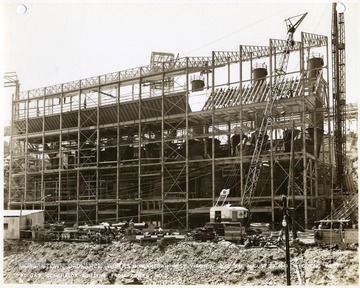
- IDNO:
- 009715
- Title:
- Gas Generator Building Under Construction, Morgantown Ordnance Works, Morgantown, W. Va.
- Date:
- 1941/08/29
- Description:
- '3:00 P.M. August 29, 1941. Looking West at gas generator building from tower No. 3.'
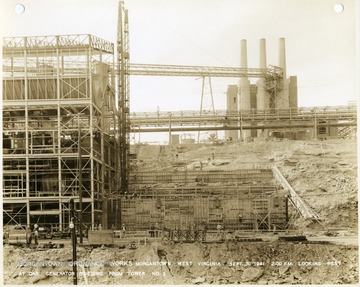
- IDNO:
- 009716
- Title:
- Gas Generator Building Under Construction, Morgantown Ordnance Works, Morgantown, W. Va.
- Date:
- 1941/09/30
- Description:
- '2:00 P.M. September 30, 1941. Looking West at gas generator building from tower No. 3.'

- IDNO:
- 009717
- Title:
- Coke Oven Area, Morgantown Ordnance Works, Morgantown, W. Va.
- Date:
- 1941/09/30
- Description:
- 3:00 P.M. Sept. 30, 1941. Looking Southeast at coke oven area from tower No. 2.'
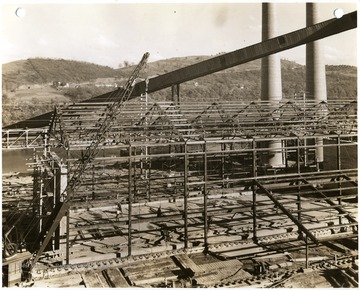
- IDNO:
- 009718
- Title:
- Morgantown Ordnance Works Under Construction, Morgantown, W. Va.
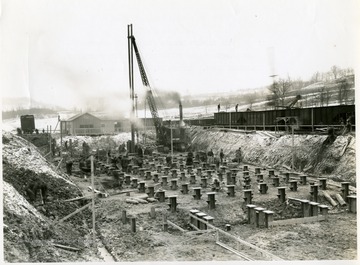
- IDNO:
- 009719
- Title:
- Construction of the Coke Oven Foundation at the Morgantown Ordnance Works, Morgantown, W. Va.
- Date:
- 1941/01/30
- Description:
- 'Photograph No. 103; View showing steel H piles being driven and bearing plates placed for coke oven foundation. Looking south. January 30, 1941, 12:30 P.M.'
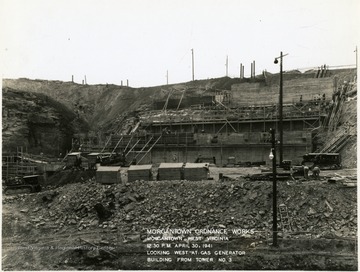
- IDNO:
- 009720
- Title:
- Gas Generator Building Under Construction, Morgantown Ordnance Works, Morgantown, W. Va.
- Date:
- 1941/04/30
- Description:
- '12:30 P.M. April 30, 1941. Looking West at gas generator building from tower No. 3.'











